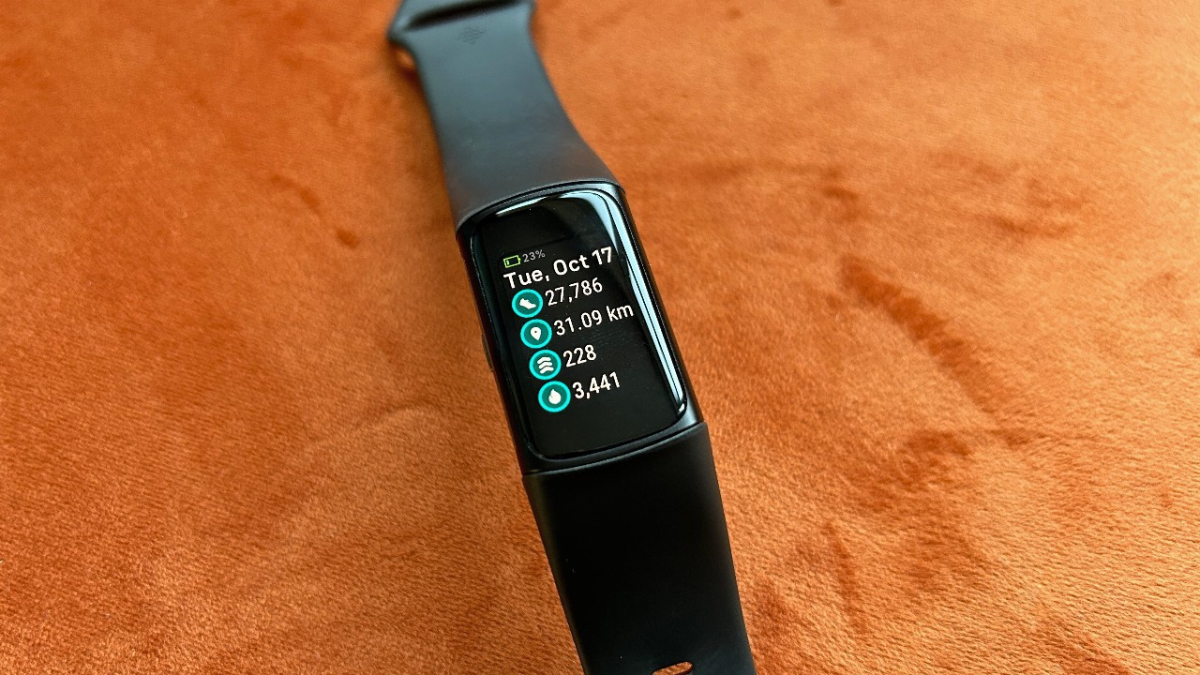Our Verdict
The Fitbit Charge 6 does its core job of tracking daily activity well, and the addition of Google Wallet and Google Maps make it the smartest fitness tracker band I’ve used. However, it’s unreliable when tracking workouts—heart rate and GPS accuracy fell short in my testing.
For
- Great activity and health tracking
- Comfortable and sleek design
- Useful smart features
- Long battery life
Against
- Poor HR and GPS accuracy
- Only works with YouTube Music
You can trust Coach
The Fitbit Charge 6 is the flagship band in Fitbit’s line-up and has most of the features you get from smartwatches; it’s like the Fitbit Sense 3 in a slimmer, less conspicuous design. It’s rich in features and one of the best fitness trackers for monitoring general activity and sleep, but its poor accuracy makes it less impressive when tracking workouts.
Fitbit Charge 6: Price And Availability
The Fitbit Charge 6 launched in September 2023 and costs $159.95 in the US and £139.99 in the UK. That’s $10/£10 more than the current RRP of the Fitbit Charge 5, though the older tracker had a higher RRP of $179.95/£169.99 when it launched.
You may well find this device included in sales, so it's worth checking Coach's Black Friday Fitbit deals page in November and our round up of Amazon Prime Day Fitbit deals in July and October.
How I Tested This Fitness Tracker
I’ve worn the Fitbit Charge 6 for two weeks, using it to track all my daily activity, sleep and workouts in that time. I’m a keen runner and have recorded runs most days with the Charge 6, as well as tracking strength workouts, yoga and a couple of bike rides. I’ve also tested several previous versions of the Charge, including the Charge 5, and other Fitbit devices including the Sense and Versa smartwatches.
Design And Hardware

The Fitbit Charge 6 has a similar look to the Charge 5, with a 1.04in AMOLED touchscreen on a slim silicone band that comes in three colors: black, gold/coral, and silver/white. You can replace this band with a variety of options made from different materials available from Fitbit and third parties.
I found the screen reasonably easy to read, even during activities, though it lacks the clarity of a smartwatch display. I also found that the always-on display was too dim when exercising outdoors, so I opted for raise-to-wake mode because I had to turn my wrist and wake the screen to see any stats on the move anyway.
There are two important changes to the hardware on the Charge 6. One is the new haptic button, which makes it easier to wake the device and navigate the menus. The other is the new heart rate sensor, which Fitbit says will be 60% more accurate during vigorous exercise sessions.
The Fitbit Charge 6 has built-in GPS that uses GPS and GLONASS satellite systems to track outdoor activities without your phone, along with sensors that allow it to take ECG scans and measure your electrodermal activity (EDA), skin temperature and heart rate variability. It doesn’t have a barometric altimeter, so it can’t track the floors you climb.
With a water-resistance rating of 5ATM, the Fitbit Charge 6 can withstand depths of up to 50m and it is suitable for pool swimming.
Activity, Health And Sleep Tracking
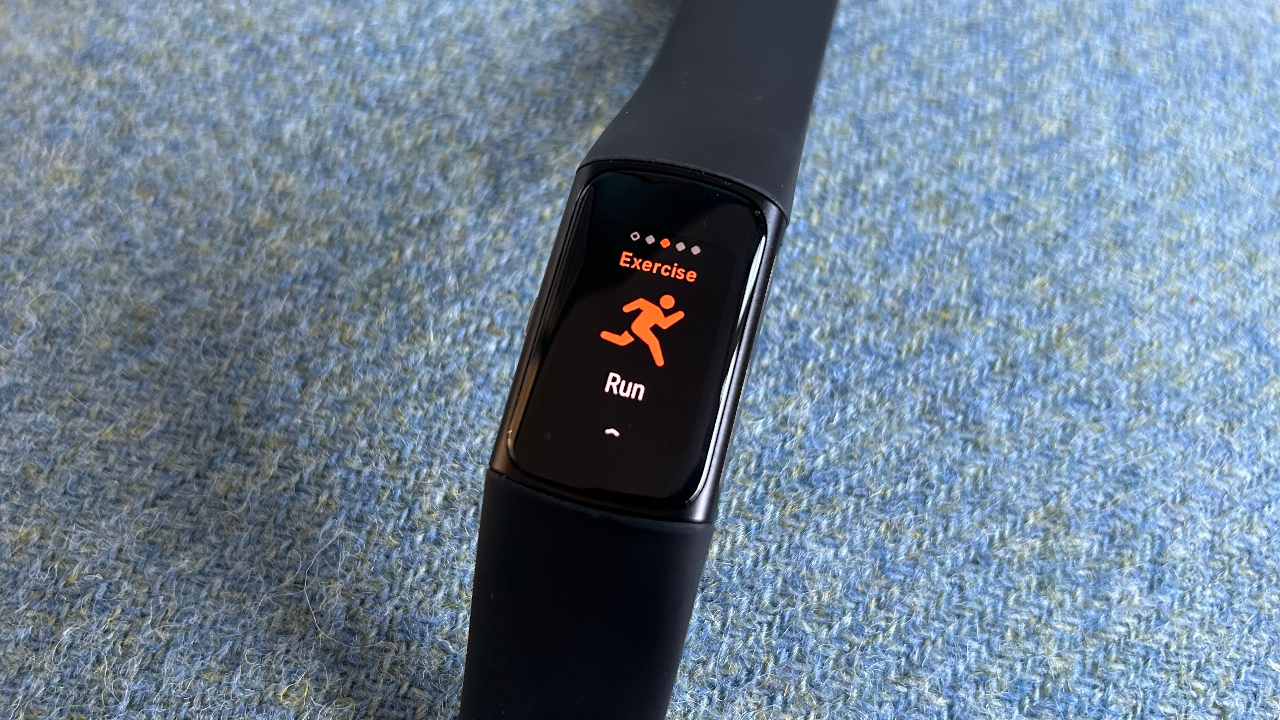
The Fitbit Charge 6 is a capable fitness tracker loaded with features that provide insights into your body. Your daily activity is monitored and you can see things like your step count, active minutes, active time and calories burned by swiping down from the main watch face. You are also prompted to tackle 250 steps each hour to stay active throughout the day.
If you’re a Fitbit Premium member you are also given a daily readiness score based on factors like your recent workouts, sleep and heart rate variability, which is measured each night. This is similar to features you get from the Oura ring and Whoop trackers, as well as Garmin watches that have the brand’s training readiness feature.
With the Charge 6, however, the readiness score was rarely of any use, since doing pretty much any kind of workout the day before would see a low readiness rating the following day. Given that I run almost daily and have done for years, I consistently got low readiness ratings even when I was fresh, though these were also skewed by the inaccurate heart rate readings during activities.
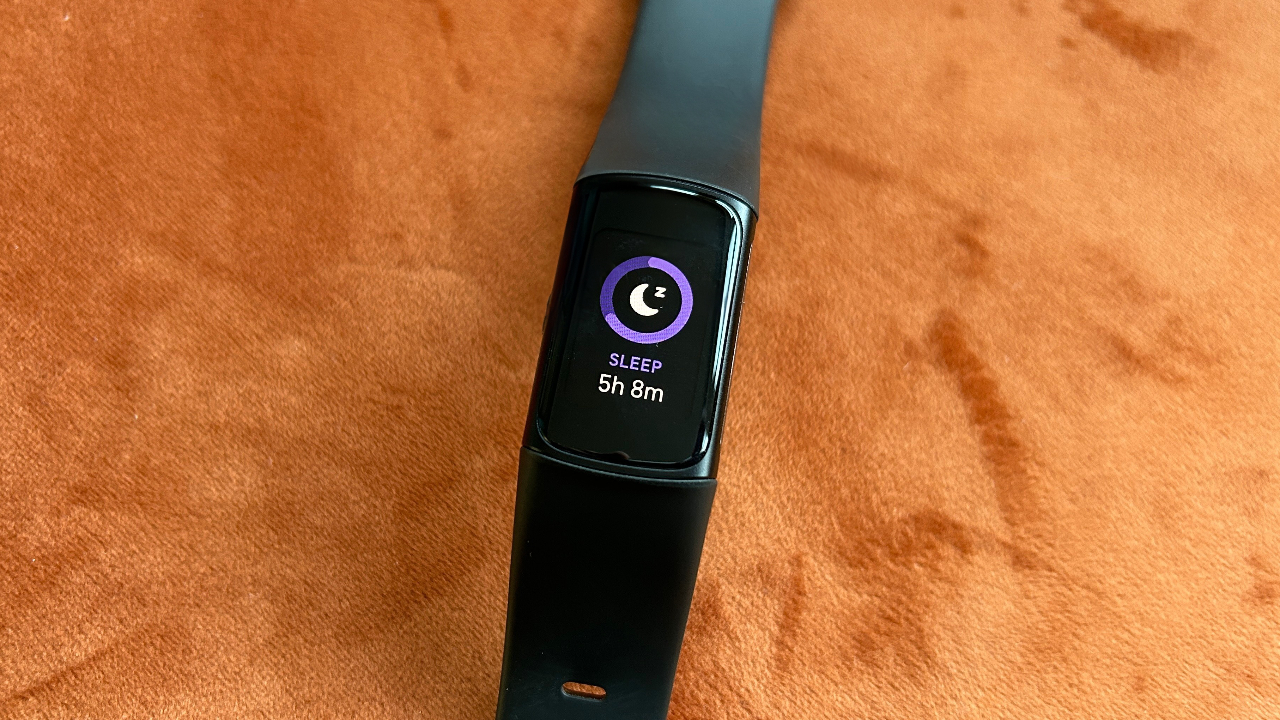
The health tracking features are more impressive. By holding the device on either side with your thumb and forefinger, you can take ECG measurements and EDA scans. The latter detects small amounts of sweat on your skin and measures your stress levels. There’s also a stress-management score in the app you can use to judge the state of your body, which overlaps somewhat with the readiness score.
In the partner app you receive insights into your skin temperature, blood oxygen saturation, breathing rate and heart rate variability, which are compared with your baseline so you can see if there are any variations outside your normal range.
There’s a lot of data to dive into and it’s impressive that such a small device can measure so much while still offering long battery life. It can be overwhelming, however, which is why it’s a shame the readiness score has been so useless for me, because it’s a good way for this data to be distilled into a simple score that indicates the state of your body. That said, getting the hard numbers on each stat and noting how they differ from your baseline is likely more accurate than relying on a combined score if you have the time.
The Charge 6 offers a high level of detail regarding your night’s rest. It struggled to track my sleep patterns accurately because I’m frequently awake in the night for longish periods with a baby. As a result, the Charge 6 often logged my sleep in multiple parts, so rather than an eight-hour period broken up with awake periods, I was logged as having slept for three hours, then another two hours, in the same night.
This seemed to negatively affect my overall sleep ratings, with low sleep scores for two stints of sleep that might add up to something better if considered as a whole. But overall, I’m not sleeping well at the moment and the Fitbit Charge 6’s ratings reflected that.
Sports Tracking And Accuracy
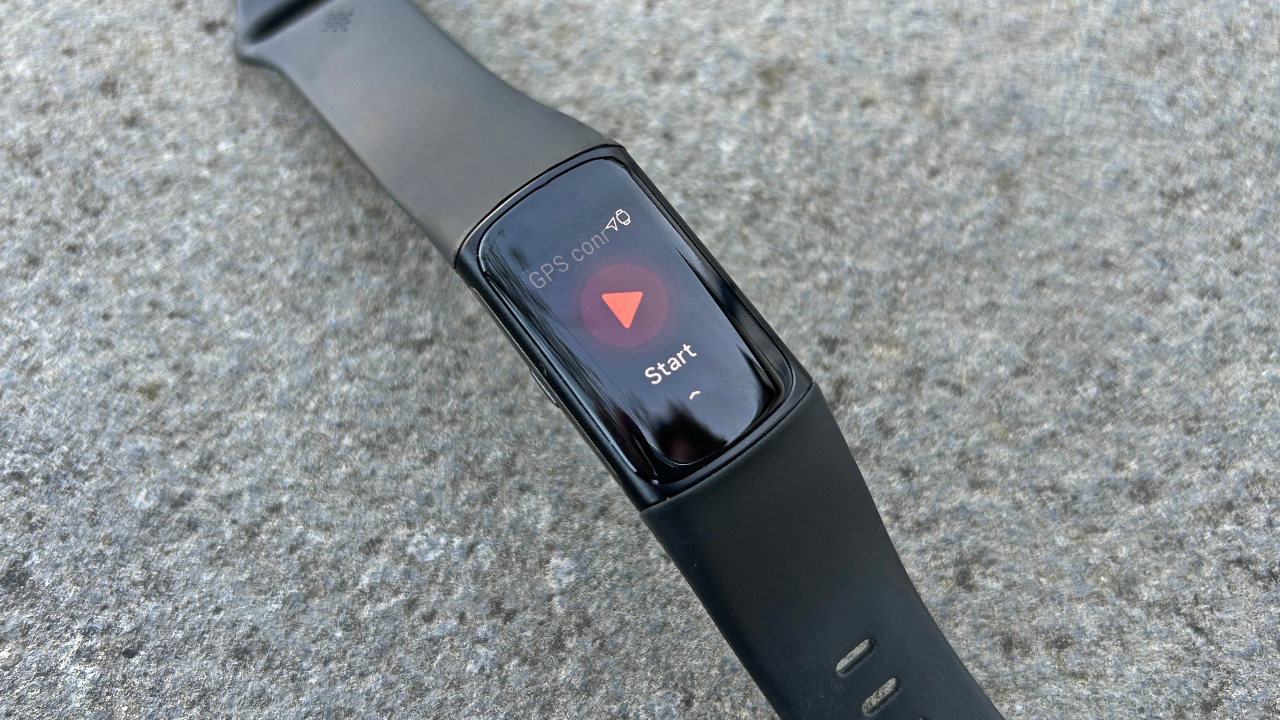
The Fitbit Charge 6 is loaded with sports modes, including new ones like CrossFit and HIIT, and has built-in GPS for outdoor activities. It can, though, also be set to use your phone’s GPS or, in dynamic mode, to use your phone’s GPS when available and then switch to built-in if you go out of range of your phone.
It won’t be a useful GPS tracker unless you carry your phone with you, because the built-in GPS is useless. Not only does it take ages to lock on at the start of a run or ride—to the point where I often had to start without it locking on because it was a waste of time—but when using the built-in GPS, the distance and pace tracking were inaccurate too. The GPS trace often had me running through buildings and the overall distance was wrong compared with accurate sports watches. When using my phone’s GPS the Charge 6 was more useful in tracking runs, even if it was still less accurate than sports watches with all-systems or multi-band GPS.
I found the heart rate tracking disappointing during runs, especially given the new sensor. The readings I got during almost every run were too high when compared with a chest strap, which then skewed other stats on the watch, like readiness and active minutes.
The accuracy was better during other kinds of workouts, such as strength workouts, walks and yoga. For the most part, the readings matched a chest strap during low-intensity indoor workouts, but if I did something more vigorous I found the accuracy dropped.
The Charge 6 automatically recognizes certain activities and prompts you to start a workout. Even if you dismiss this, which I did on general walks about town, so I could still see the main watch face, the activity is logged in the Fitbit app.
Another new feature is the ability to broadcast your heart rate from the Charge 6 to compatible cardio machines, like Peloton, Concept2 and NordicTrack machines, This means you can see your heart rate on screen during workouts, which can be handy, if the heart rate measured by the Charge 6 is accurate at the time.
The Fitbit Charge 6 was a disappointment for sports tracking. This isn’t its core feature, and if people are keen on sports they’ll probably buy a dedicated sports watch instead. But given what the Charge 6 suggests it’s able to do in this area, it underperforms.
Battery Life
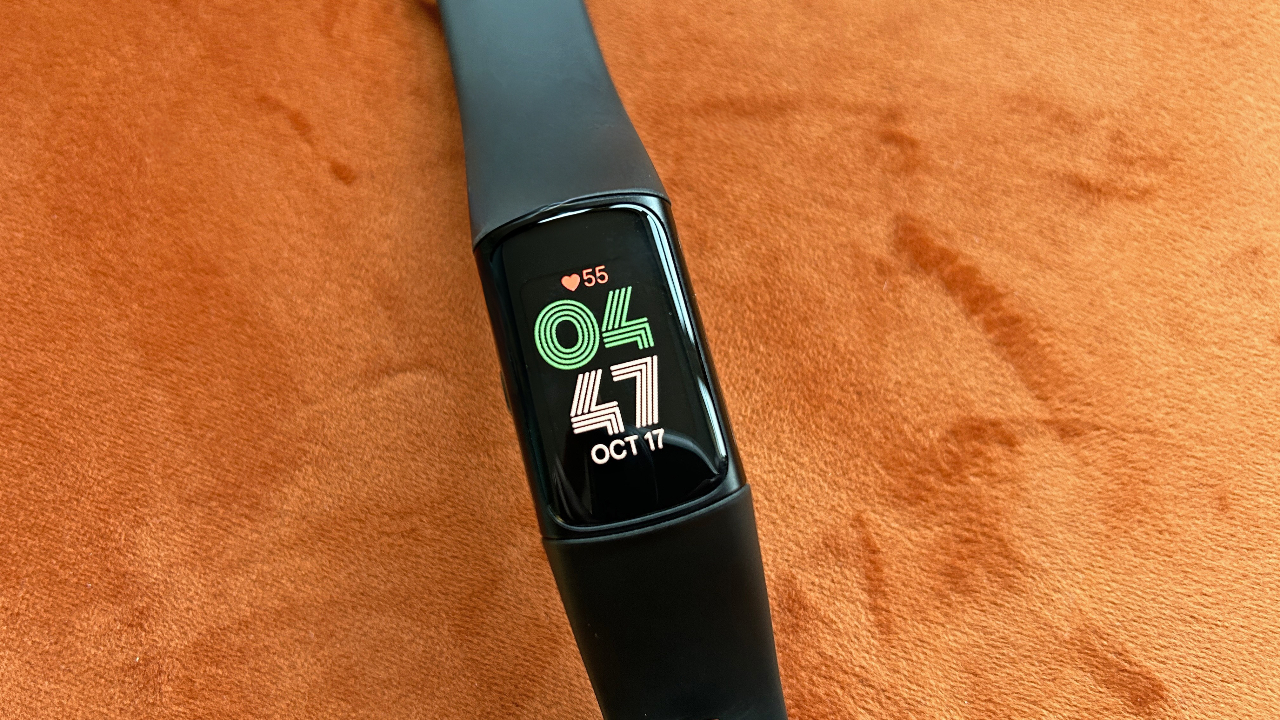
Fitbit lists the battery life on the Charge 6 as up to seven days, with caveats that using the always-on screen and SpO2 sensor will bring that down. I tended not to use the always-on display because it wasn’t that bright, and the raise-to-wake feature was reliable. I got five to six days out of the Charge 6 between charges even with a lot of outdoor running. Given how many features the tracker has and how small it is, the battery life is impressive.
Smart Features
The Charge 6 is impressively smart, with new features including NFC payments through Google Wallet and a Google Maps app. The latter relies on your phone being nearby but can provide directions on the Charge 6 once you set it up in the phone app.
You can now control music playback on YouTube Music using the device, though this is less useful than general music controls. Google owns YouTube Music and none of the other more popular streaming services, so it makes sense, but it’s disappointing that the feature is so limited, especially because Fitbit devices offered general music controls in the past.
Is The Fitbit Charge 6 Worth It?
The Fitbit Charge 6 is a great activity tracker and the best option if you want a band, rather than a sports watch, on your wrist. It’s a subpar sports tracker, with heart rate accuracy that’s unreliable during higher-intensity activities, and the built-in GPS is essentially pointless, but if you’re mostly using it to track activity and sleep with the odd indoor workout, it will be fine.
It’s impressive how much has been crammed into the band, with an array of sensors that provide insightful health tracking and smart features that are useful at times. It’s a better all-round device than the Charge 5, though it still prompts similar frustrations, such as the poor GPS and the fact you need a Fitbit Premium subscription to get the most from the health and sleep tracking.

Nick Harris-Fry is a journalist who has been covering health and fitness since 2015. Nick is an avid runner, covering 70-110km a week, which gives him ample opportunity to test a wide range of running shoes and running gear. He is also the chief tester for fitness trackers and running watches, treadmills and exercise bikes, and workout headphones.
